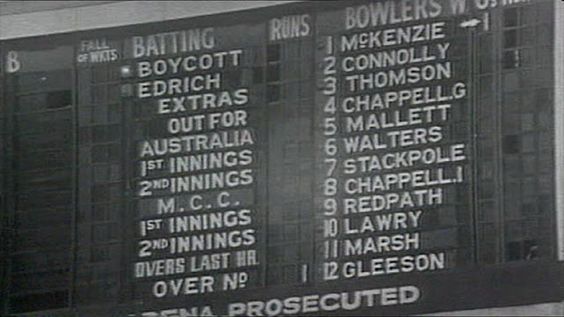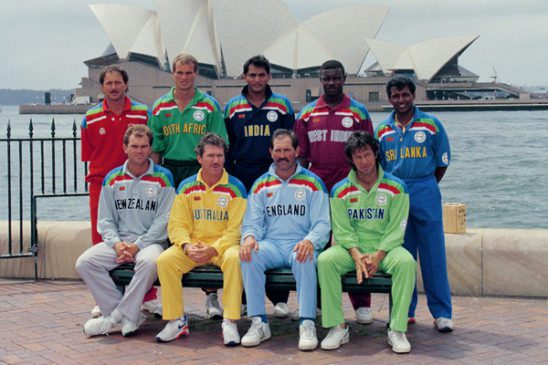Even though test cricket was started quite early, the evolution of ODI cricket brought in a kind of revolution which the game desperately needed. As the number of people sticking to their tv sets for 5 consecutive days to watch a match, were getting less, it was necessary to go one step further so as to keep the people excited about the game. Over the years, the game has had many modifications in terms of the rules, the fielding restrictions, the equipment, as well as the way in which the game is played. Here’s a look at how the game was born and how it has evolved over the years.
Initial phase of the format
The birth of ODI cricket was actually an outcome of a washed out test match in Melbourne. After the first three days of a test match between Australia and England were washed out, it was decided to be played as a one day game for the subsidence of the financial losses. And so, on January 5, 1971 the first ever ODI match was played with 40 overs a side and each over consisting of 8 deliveries. With this match managing to grab a lot of attention and with the following series’ between Australia and England featuring ODI’s, this format gained immense popularity.
Soon, ICC introduced the ODI format with 60 overs a side and in 1975, the inaugural world cup was organised in England. By 1983, the game had managed to grow and reach various parts of the world. India showcased excellent skills and managed to outplay the mighty West Indies in the finals of this world cup. This resulted in a humongous boost in the popularity of the game in different parts of the world.
Scorecard of the first ODI ever. Image courtesy: cric flavor
Fielding restrictions & Formats
Even though 60 overs a side, there were hardly any big scores made those days as there were no fielding restrictions. In the 1980-81 Australian season, fielding restrictions were introduced for the first time. But it was the 1983 World cup when the fielding restrictions, as well as the 30 yard circle, actually took firm roots. After the successful 1983 world cup, the ODI format started spreading in different parts of the world. And unlike England, the daylight hours in different parts of the world were shorter and playing 60 over ODI’s started becoming a difficult task. So, by 1987, every nation had adapted to the 50 over ODI format while ODI’s in England were still 55 overs a side.
The 1987 World Cup moved out of England for the first time and was hosted by India & Pakistan. Also, it was the first ever 50 over world cup. In the 1992 World cup, only two fielders were allowed outside the 30 yard circle for the first 15 overs and 5 fielders were allowed outside the circle from the 16th over. These rules have been changed from time to time, with the 15 over mandatory powerplay turned into a 10 over one as well as the 5 over batting and bowling powerplays being introduced in the late 2000’s but removed later on. In 2015, in order to be just to the bowlers, ICC removed the batting powerplay and also allowed 5 fielders outside the 30 yard circle for the last 10 overs.
Kits & Balls
On 28th November 1978 history was being made as the SCG witnessed the first-ever ODI with colored clothing and it was also the first-ever day-night game. White balls and black sight-screens were also used for the first time ever. Although Australia had slowly started adapting to these changes, it still took a lot of time for the other nations to do so. But in the 1992 World Cup, these changes were featured and soon, colored kits and white balls became a norm. And with the improvements in technology and better broadcasting, this World Cup managed to become one of the biggest Cricket events until then.
The decade of 90’s saw a gradual shift from white kits to colored kits as well as a shift from red balls to white balls. In December 2000, all the nations finally adapted the colored clothing as well as the use of white balls. The famous ‘Duke’ ball was first introduced during the 1999 World Cup.
The captains of the 1992 world cup in color kits. Image courtesy: Indiatimes.com
A Batsman’s paradise
With no fielding restrictions as well as with the players acquainted with only test cricket, the initial stage of ODI cricket saw hardly any team reaching the 300 mark even with 60 overs to play. But with the advent of powerplays, the game slowly began drifting in the favour of batsmen and soon, the game started seeing runs being scored more easily and individual as well as team records being broken. Also, with the quality of bats improving each day, the game saw the fastest of all bowlers being smashed for sixes very easily as also, cuts and edges were managing to race to the boundary ropes. So, where a 280 in the ’80s was a safe score to defend, even 350 plus scores were not safe and were being easily chased down.
On March 12, 2006 in an ODI at Johannesburg between Australia and South Africa, Australia scored a mammoth 434 batting first and everyone considered it to be an easy win for Australia. But, South Africa had other plans. They came in and thrashed the Australian bowlers all over the ground and chased the target in 49.5 overs with 1 ball to spare. In another instance in an ODI between Sri Lanka and India, India scored 414 batting first and yet managed to just win the match by 3 runs. Matches like these brought a lot of glamour and following to the game although it gave more importance to the batsmen than the bowlers.
Hence, the game has seen staggering growth and it is expected to grow even more in the upcoming years. Batsmen are coming up with innovative shots every day and the bowlers too, are adding different variations to their armory. With a team like Afghanistan making a promising start to its career, with England recently scoring the highest ODI score of 481-6, with bowlers taking hat-tricks and consistently bowling unplayable deliveries, and with fielders pulling off some mind-blowing catches, the game promises a lot more and opens the gates to a lot of possibilities in the coming years.
Do you any interesting trivia about the Evolution of ODI Cricket or you to cover any specific sports news please share with us in the comments section.



